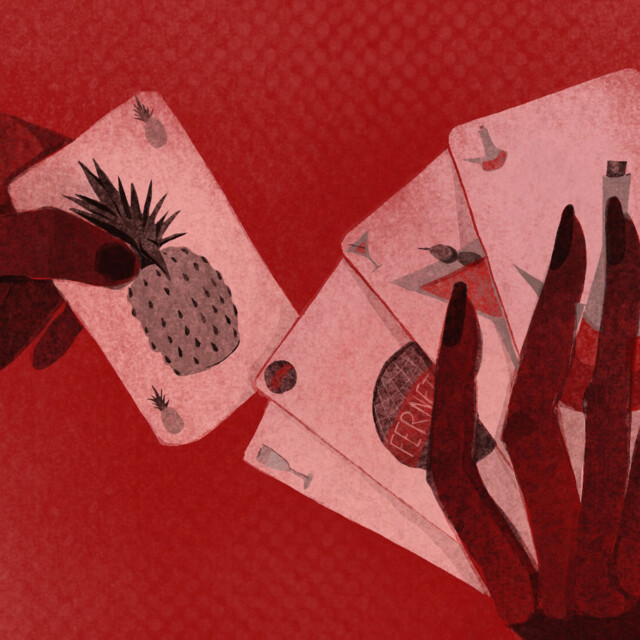The unmistakable chord of clinking glasses is probably the most universal salute to indicate a tenor of cheer. This act is used to demonstrate a celebration, to show well wishes to one’s health, to be merry and jubilant, or to signify farewell. One person initiates the ritual, everyone joins in.
While the performance of cheers is arguably the most obvious and accessible demonstration of fellowship in the drinks space, there are other more subtle displays — handshakes, nods, tips of the hats, if you will — that provide camaraderie in a less overt way. And while some of these might be known to the general public, say giving or taking a free shot, most exist among those who either work in the trade or are somehow adjacent to it. Here’s a list of some treasured industry winks, so you can be a little more in the know yourself the next time you see them.
A Fernet Challenge Coin
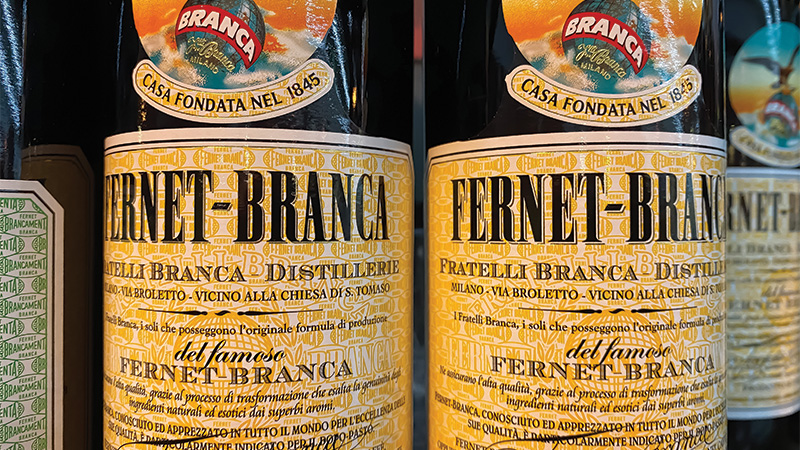
“The fastest way I ever make industry connections in a new place is by sitting at the bar and ordering a shot of Fernet-Branca,“ says David Avery, regional portfolio manager of Branca USA. Due to its pronounced taste, Avery is frequently met with the response: “You must be in the industry, normal people don’t drink this stuff.” That, however, explains a bit of this Italian amaro’s appeal. The drink itself has been distinguished with some fellowship, “where those of us in the know enjoy identifying one another through this secret ritual.” Often, when Fernet is ordered, the bartender will pour themselves one to join in the tradition.
The drink’s prevalence in America is most notable in San Francisco establishments, where Fernet is imported at a far higher rate than any city, aside from Buenos Aires. This shot ritual has become so customary that the distillery has issued many challenge coins across the globe to further legitimize this informal custom. The coins are made in limited batches that are never reproduced, making them a form of collectors’ item. Fernet also makes coins to commemorate various events such as Tales Of The Cocktail, Speed Rack, Bar Convent Brooklyn, as well as a couple of other key happenings. “Those coins tend to be even harder to get, as they are usually handed out in limited numbers at the specific event, and never again. For a fan of Fernet, the coin is the ultimate badge,” explains Avery.
The Porrón Pour
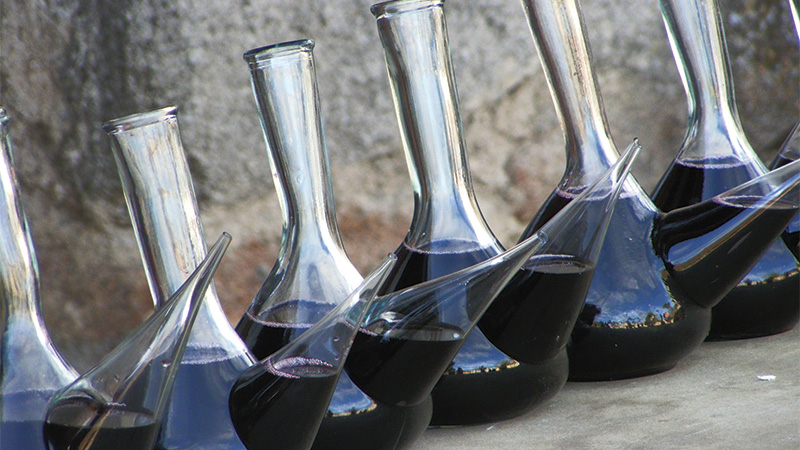
“A porrón is a sort of glass bottle with a pointed spout from which a thin jet of wine spurts out whenever you tip it up; you can thus drink from a distance, without touching it with your lips, and it can be passed from hand to hand,” writes George Orwell in his 1938 work “House of Catalonia.”
Even Orwell found this Catalonian vessel alluring, as written in his wartime records. But this historic wine pitcher has moved from merely being associated with the European region and its vineyards, to a conversation piece at a wine bar and, when in use, an instrument of jest and hospitality.
Lauren Friel, wine educator, writer, and owner of Rebel Rebel wine bar breaks it down: “Honestly, a porrón just tells me you like to party. That you like people. That you aren’t a holier-than-thou, fussy-as-fuck wine person.”
For David Riddile, marketing and operations director at Here Today Brewery & Kitchen, the pórron is so much more than a glass pitcher. “The main reasons I keep a porrón on my bar is because it a) looks cool and b) it’s an unfamiliar object that can start a conversation and maybe give someone a new experience around beverages.”
Friel explains that seeing a porrón at a wine bar invites and welcomes those who may not align themselves to the scriptures of formal wine service. “You’re also willing to maybe get wine all over your face, which tells me you have a good sense of humor about life,” Friel adds. Speaking of life, a photograph depicting a person drinking from a porrón is one of 115 images featured on NASA’s Voyager Golden Record. If George Orwell, Carl Sagan, and space creatures think this thing is notable, you might as well give it a go.
Pineapple as a Symbol
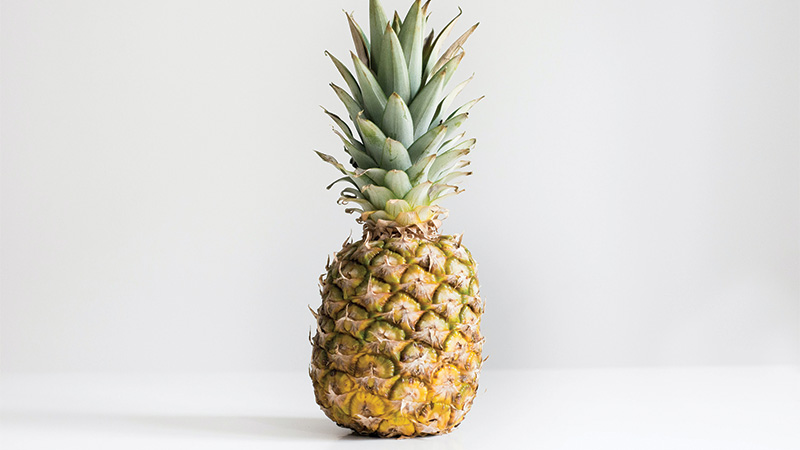
The pineapple is probably distinctive enough across art and fashion to hold a place in the cultural canon — as far as any fruit can, at least. But insiders know the tropical plant represents hospitality as well, with a long history rooted in classicism and colonialism.
Due to its luxury, a single pineapple during the 1800s cost well over $5,000, and would on occasion be rented just to be put on display. The prized accessory became known as a symbol of impressive hosting. Being served pineapple was an act to honor and to dazzle guests. And eventually that translated to pineapple motifs on dinnerware, wallpaper, and other furnishings. This display of opulence became further normalized in the 18th century as a motif of welcoming and friendship, a nod to the Caribbean origin where the fruit was used to convey an invitation into one’s home. During the 19th century, the pineapple became even more commercialized through the holidays in the form of, again, centerpieces, and transformed as a symbol of warmth, welcome, and cheer.
Today, you’ll likely encounter pineapples across the industry as a way to signify hospitality. It might be in the form of a tattoo, branding and logos, or simply in a restaurant’s decor.
Lager Lager Lager
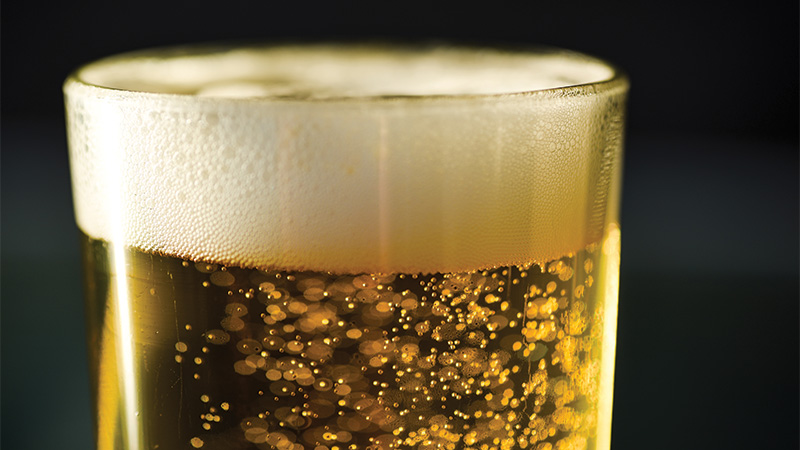
Lager: The brewers’ beer. The admiration of this beer style is due to the technical aspects of production, its clean taste, and history, among other things. While many fans of craft beer are obsessed with IPA these days, real beer nerds love lager. Halfway Crooks in Atlanta has eulogized this admiration in its creation of crispy lagers and merchandise featuring copy boldly stating “Lager Lager Lager.” This simple message has become a global trend — with many purchasing Halfway Crooks clothing without ever trying the brewery’s beer.
Lucy Henson, marketing and events manager of Bissell Brothers Brewing Company in Portland, Maine, is someone who shares a particular affinity for both lager and this mantra. “Lager fandom is definitely ‘A THING’ within the industry, and has been for a while,” she says.
“Ultimately I think Halfway Crooks nailed the conversation-piece merch category here. ‘Haha! Cool hat. Lager Lager Lager. Where’d you get that?’ always leads to a full-on plug for Halfway Crooks, even though their name is nowhere to be found on the item itself,” Henson says. “Who doesn’t want to be on Team Lager? Lager is timeless. And easy. And simple. Aren’t we all kinda thirsty for that these days?” she adds.
The Salted Nut Roll Surprise
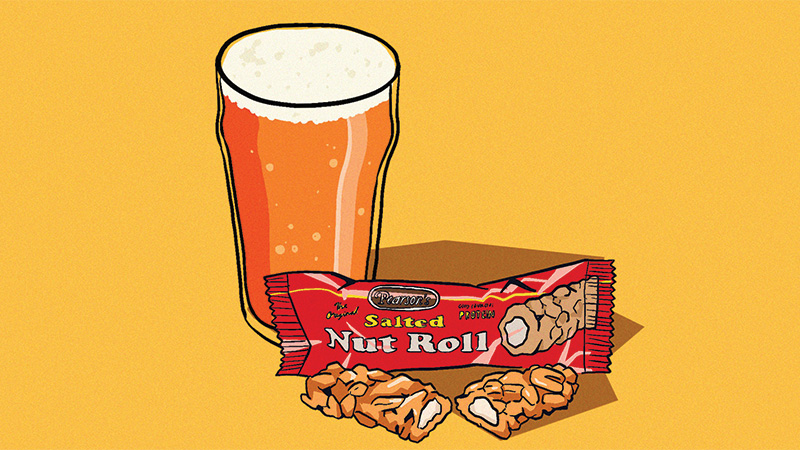
This Minnesota candy bar, lovingly known as the “brewer’s lunch,” is a staple across many brewery production floors. Why? Because since 2004, Brewers Supply Group (BSG) has been adding them to its malt shipments as a small treat for brewers to enjoy. “BSG has kept this tradition of providing a Pearson Candy Company Salted Nut Roll going strong,” says Juno Choi, strategist and member of the marketing team at BSG. “It’s our little thank you to brewers for all their effort unloading pallets of malt and so they can stay fueled to keep great beer flowing.” Unpacking a shipment from the BSG brings Easter egg-like joy for anyone who discovers a Salted Nut Roll hidden in the pallet. The Pearson’s Salted Nut Roll is so adored that breweries from coast to coast have paid tribute to it with their own special beers.
An enthusiast of the Nut Roll since childhood, Sarah Perez, brewer at Resident Culture, admits that she has not had any of the beers that celebrate the confection, but is certainly on the hunt for one. Having spent time as a brewer in Alaska and Hawaii, Perez appreciates the complimentary treat that connects brewers nationwide. “It has a cult following because it’s a little snack, love note, and kind thought that is placed to your order and helps unpacking a pallet,” she says, adding that it tastes even better when the candy is eaten while depalletizing.
